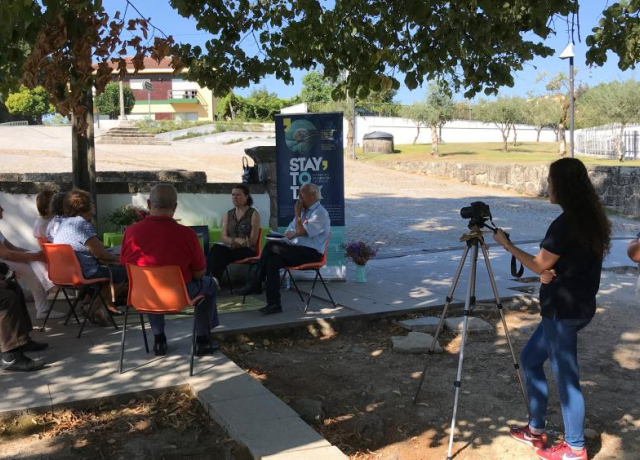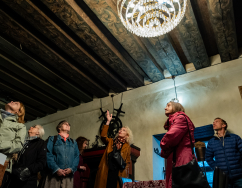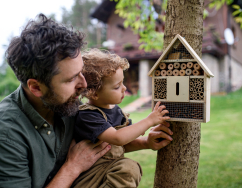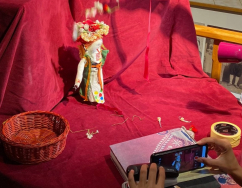European Heritage Days Article:
Involving Communities in Sustainable Heritage Events
European Heritage Days Article:
Involving Communities in Sustainable Heritage Events
Discuss and shape local approaches to heritage
Getting communities involved in managing heritage in their area is a useful approach to sustainability. Our brochure recommends “participatory community consultation methods… to discuss, define and design sustainability and sustainable heritage in the local context. This process has the potential to engage all inhabitants to stimulate interest and commitment on the issue while encouraging greater involvement in decision making.”
Focusing on something specific, such as a ‘2030 Vision’ can be a helpful starting point. Often run in collaboration with local authorities, these types of events can bring together diverse groups of residents to visualise their thoughts on cultural heritage management and how heritage assets should be cared for and look in the future. Young professionals are another audience who can benefit from these kinds of structured events; organise a day of workshops and talks addressing questions such as “what should be sustained in heritage”, “what should heritage sustain”, and “what is the relationship of heritage to other dimensions of sustainability?” to get their input for shaping local policies. And, with digital technologies playing an increasing role in heritage management and engagement, a ‘hackathon’ to bring together historians and community members with data scientists and IT specialists could help create new processes and ideas about how to interpret and communicate aspects of heritage to the wider public.
Work together for community benefit
Events which encourage communities to work together can benefit everyone, and working with local organisations and groups is a great way to create collaborative events as well as finding volunteers to help run them. One idea is to create maps to share walking or biking routes between heritage locations in your town to encourage visitors to plan a full day out and explore and learn more about everything your area has to offer. Another option which ticks all the social, environmental and economic sustainability boxes is to promote the idea of local community gardens. Schools, groups or neighbourhoods can be involved to design and manage them, and these can even focus on a specific type of space such as a wildflower nature garden to encourage insects and wildlife, or an edible garden to establish a micro farm. Clackmannanshire Tullibody Community Garden in Scotland is an example which grows affordable fruit and vegetables to encourage local people to cook fresh and healthy meals and which opened its gates for the public to look around during Doors Open Days in 2021.
Another type of community initiative is to ‘adopt’ heritage assets and fundraise for restoration projects. Setting up a heritage adoption programme can contribute to community well-being and a sense of shared ownership of cultural heritage – get in contact with your local authorities to see if they can help, and then encourage groups or schools to focus on specific places to study, raise awareness about or fundraise for. And for any restoration projects underway, site-visits to see progress can be a really interesting chance for people to learn about stonemasonry, bricklaying or other traditional techniques involved, as well as providing opportunities for them to feel more involved in the development of their local area.
A community-minded point to remember when planning though is that, while large visitor numbers can be great for events, they can also cause difficulties for local communities through additional noise, light and rubbish pollution and traffic generation. Assess the impact your events might have by considering these kinds of issues, look for ways to minimise the disturbances and keep an open dialogue with local residents about your plans. If you’re an established venue, you could even hold a specific event for local people to discuss how to hold tourist activities that are sustainable, and which help boost the local area as a whole. For an example of how this can work in practice, take a look at the 'Stay to Talk' story from Portugal which helps to make tourists aware of the value of the local identity, language and culture through a participatory community social impact project.
Plan activities for all ages
Our Sustainable Heritage Brochure suggests organisers “pay particular attention to ensuring intergenerational and inclusive dialogue as a central purpose of their events”, so bringing people together from all ages is an important goal. Group activities can be a great way to do this, and an inspiring European Heritage Days stories example from Croatia is the ‘Šibenik Fortresses Friends Club’ which raises awareness of cultural heritage by bringing people aged 1 to 101 together for music concerts, dance performances and film screenings. Another fun event example could be an astronomy or ‘Dark Skies’ night to encourage people in your area to go stargazing at the same time. Culinary events are another type of activity likely to prove popular with both children and adults alike. Look for historic recipes in the archives or from family cookbooks and get people involved in the cooking… and the eating!
Engaging with younger audiences is a traditional way of passing down cultural knowledge. Working with school or educational organizations, think about events which children might be interested in. For example, your local library might be able to help plan a daytime ‘pyjama party’ with a local fairy tale storytelling session to explore the values and identities these portray, and why not invite their grandparents along to take part and tell stories from their childhood too. For more ideas on intergenerational learning, take a look at this article from 2020.
Make events accessible for everyone
Inclusion and diversity are important elements of the theme as everyone should feel welcome at European Heritage Days. Events showcasing songs, drama, dance, and other elements of cultural heritage are a particularly good way to generate new ideas and provide diverse voices about individual and collective identities. Accessibility for people with disabilities is also important to address to ensure that everyone in your community can take part in events. Virtual tours can be helpful in removing physical barriers for historic buildings or natural heritage areas which can otherwise be difficult to access, while audio guides and sensory activities can help widen access too. For more ideas on how to promote diversity and make your events accessible, take a look at look back at last year’s Heritage: All Inclusive theme and brochure.
There are lots of reasons to connect with communities and get them involved in this year’s Sustainable Heritage theme. For more event ideas, good practices and background information on interpreting the theme, take a look at our Sustainable Heritage Brochure which features a specific ‘Communities’ section.



